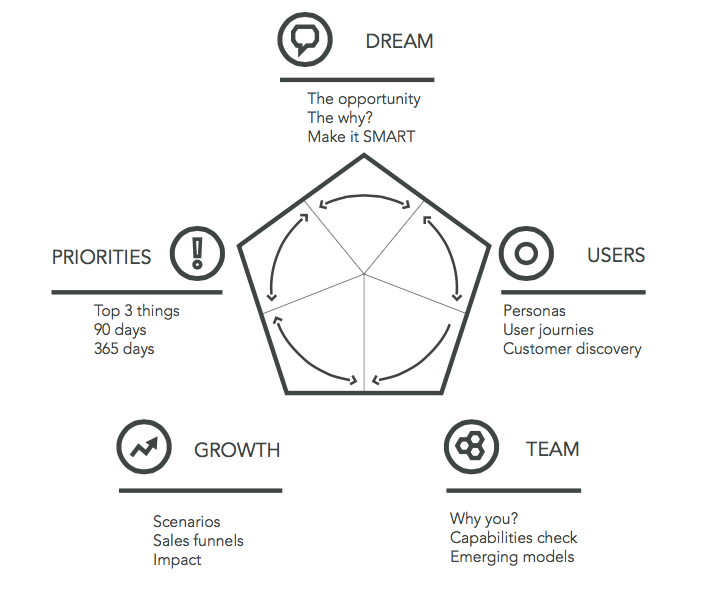Yes, there’s a plethora of tools out there to help you startup in business. Whether you’re one of those naysayers that thinks to themselves, “Oh toolkit my ass”, or a well seasoned toolkit ninja — the Business Design Toolkit, if anything — is straightforward. So far it’s proven great for making ideas happen and can benefit, really, anyone.

It all started with an innocent suggestion by a friend to riff on ablog post. It was jammed with startup resources premised on a workshop I had delivered countless times to hundreds of startups and entrepreneurs. Like so many things, it started with a germ of an idea and multiplied from there.
Whether that means you’re running a business, about to start- up, working for a large organisation or a small non-profit — the kit gives you an aerial view of your business to help you gain a new perspective. More so, it often leads to insights that impact how you go about designing and building your venture.
The tried-and-tested principles in the toolkit will aid you as you navigate your journey.

These 5 questions are provocations to get you to step outside of your business. Your encouraged to jump in with any question that feels like the right one to start with and simply move on from there.
For every section in the toolkit there are additional resources allowing you to dive deeper whenever you like — and a whopper of a list of videos, blog posts, books, and more appear at the end.
DREAM
Can you tell someone what your product, service or business does — in 140 characters?

USERS
The only way to find out if you have a viable business, and to grow it for that matter, is by listening and learning with customers.
Write down specifically who your first customers are, then go out and find them — and fall in love.
You want to be wholly confident that they will use, and in many instances pay, for what you’re peddling.
Your user persona is an archetypal character that represents a group of your customers who share common goals, attitudes and behaviours when interacting with your product. Try plotting at least 3 personas to give a broad enough picture of your different customer types. Like so..

or like so:

TEAM
Why is your team the right one for the job? Consider if you have the right capabilities and group them by individuals. Also identify if you have complimentary skill sets, big gaps in expertise and importantly — the capacity to execute.

GROWTH
These are the measurements that you need to set for your business concerning how you plan to acquire, keep and grow your customers.
Think in terms of both how your product will win in the marketplace and how you will build enduring customer relationship. Map out what this actually looks — Go Wild.

PRIORITIES
This is all about why your business exists and how it creates value. With the vantage of time it should become easier. One way to aid the process is to look at your values and goals — these are specific measurements that you need to set. In the toolkit there are also templates to help you map out what the next 90 (as well as 365) actually looks like.
Time to stop reading, and get moving…

Download the full toolkit here
